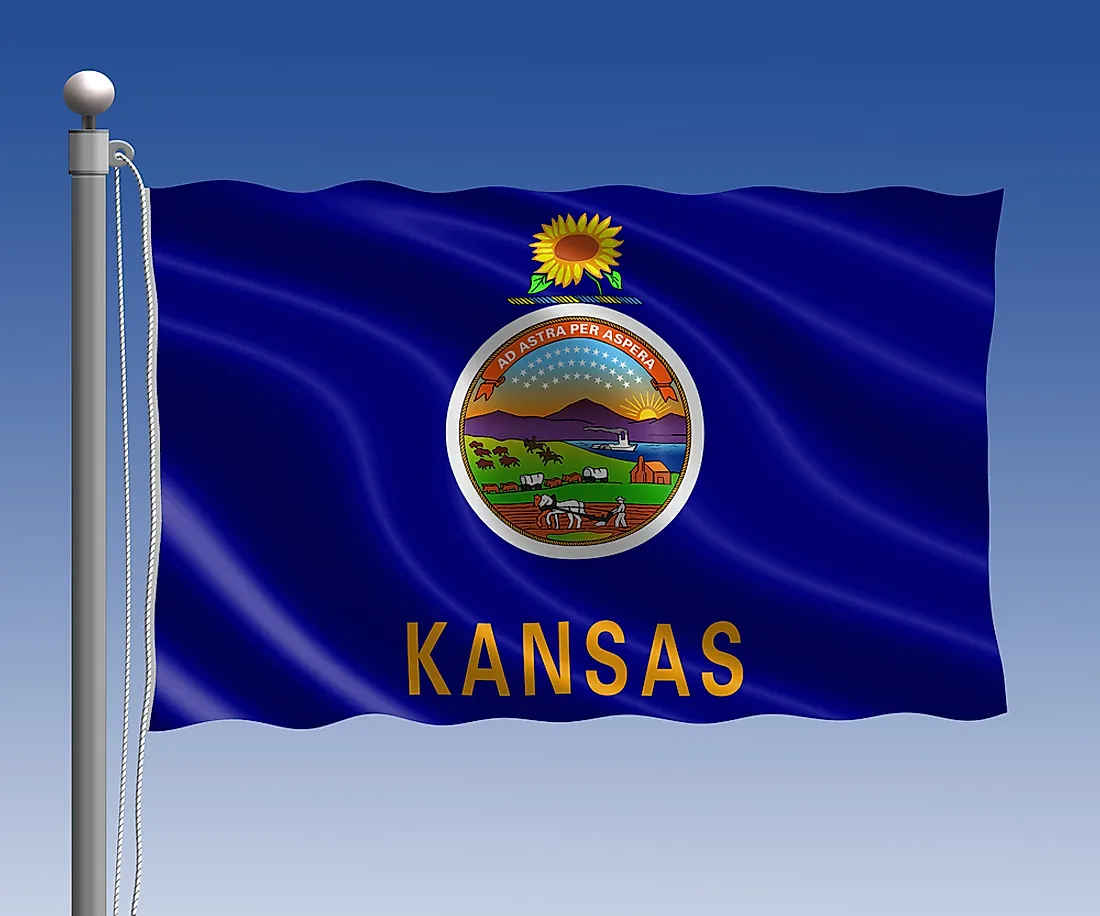Kansas State Flag

The Kansas state flag was adopted in 1927 under the leadership of Governor Benjamin S. Paulens. The major features of the flag include the seal of the state of Kansas and a sunflower, which is considered the state’s flower. The flag has a dark blue background with the words “KANSAS” embedded on the lower side of the seal. The word was added to the flag in 1961. The flag is one of the best-ranked flags by North America Vexillological Association (Nava). During elections, a flag should be raised on every station where voting is taking place. According to the statute, and to ensure respect and dignity of the flag, anyone who breaches the law relating to the flag shall be liable to a fine of between five dollars and 100 dollars.
Design and Features of the Kansas State Flag
The flag is rectangular with the seal, which measures 17 inches in diameter, located in the middle. The background is dark blue in color. The word "KANSAS" is horizontally written on the lower side symmetrically such that the first letter shall be the same distance from the edge as the last letter is from the flying side. The upper side has a sunflower on a golden line. The sunflower, a recognized state flower, freshly cut from the stem symbolizes the ability of the citizens to diagnose and solve their challenges courageously.
The contents of the seal represent all the elements of the state with the river and boat symbolizing trade and industries in the commercial sector and plow depicting the enormous agricultural potential. The 34 stars highlight Kansas as the 34th state to join the US. Slightly above the stars are the words "AD ASTRA PER ASPERA" meaning "to the stars through difficulties" embedded in a small curve, meaning that they acknowledge having been accepted to the statehood. The many mountains in Fort Riley are represented in the seal while the wagon train represents growth and development of the state. The man running after buffalos (American Bisson) depicts the adventurous and hardworking citizens. The piece of gold represents the Louisiana which gave birth to the Kansas State as we know it today. The dominant colors on the seal are green, light blue, white, black, yellow, silver, purple, and brown.
History of the Kansas State Flag
The flag was designed by Hazel Avery in 1925. The flag was displayed in Lincoln, Kansas, by Governor Benjamin S. Paulen for the army’s Kansas guard. It was modified in 1961 to include the word "KANSAS" on the bottom. Previously, a banner was used as a flag. It was an enormous sunflower with Kansas on a blurred background.
The flag was initially hoisted horizontally to show respect to the main flag of the United States which was raised vertically. However, on the advice of the Washington DC, the current flag and method of hoisting were adopted. The flag is hoisted during all the national occasions that the state is participating in. It should be raised in the morning and lowered down before sunset. Schools and government institutions are mandated to hoist the flag. Flag etiquette dictates that it is hoisted vertically up to the top of the post. However, during exceptional cases like the death of the president, governor, congressman, and any other prominent personality, or in case of some tragic events, the flag is raised at half-mast.











